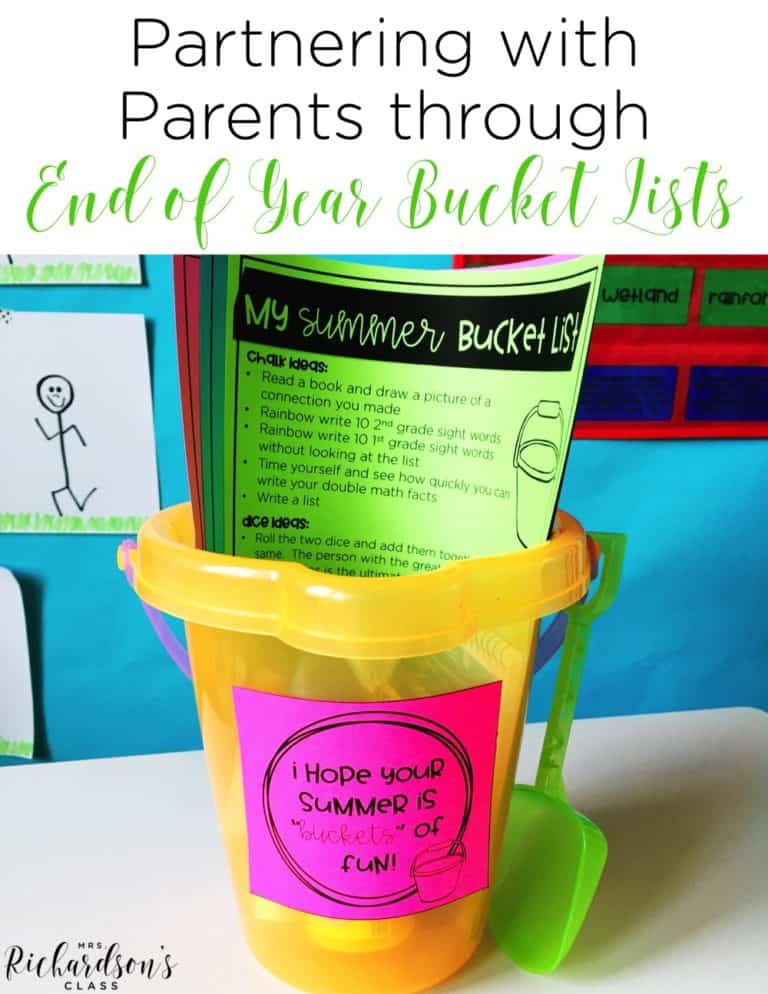


Shared reading is a valuable part of the balanced literacy approach. You may be wondering what it is or how it’s different than a read aloud. Because it takes up such a small amount of time, it often is left out. But I am here to tell you that the 15 minutes spent on shared reading is SO CRUCIAL, especially for our kindergarten and first grade learners. It’s simple to implement and it would quickly become a favorite part of our day in the classroom.
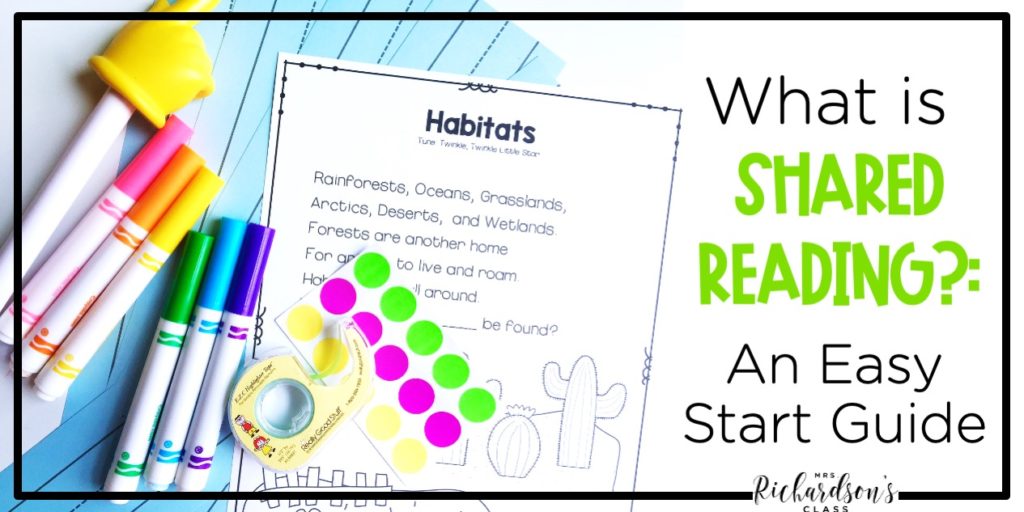
If you are like me, I didn’t learn a whole lot about this in college and or practice it during my student teaching time. But it’s easy to implement and powerful! I want to break this down for you.

Shared reading is a part of the balanced reading model (read aloud, shared reading, guided reading, and independent reading). This is a 15ish minute block of time within that model that should be practiced daily. Simply stated it’s the “We do.” part of the gradual release model. This element is crucial. It’s time for the teacher and students to practice together.
My friend, Dawn, stated it so simply.
“Interactive read aloud addresses teacher modeling and student practice on whatever was just modeled. Shared reading has modeling alongside practice.”
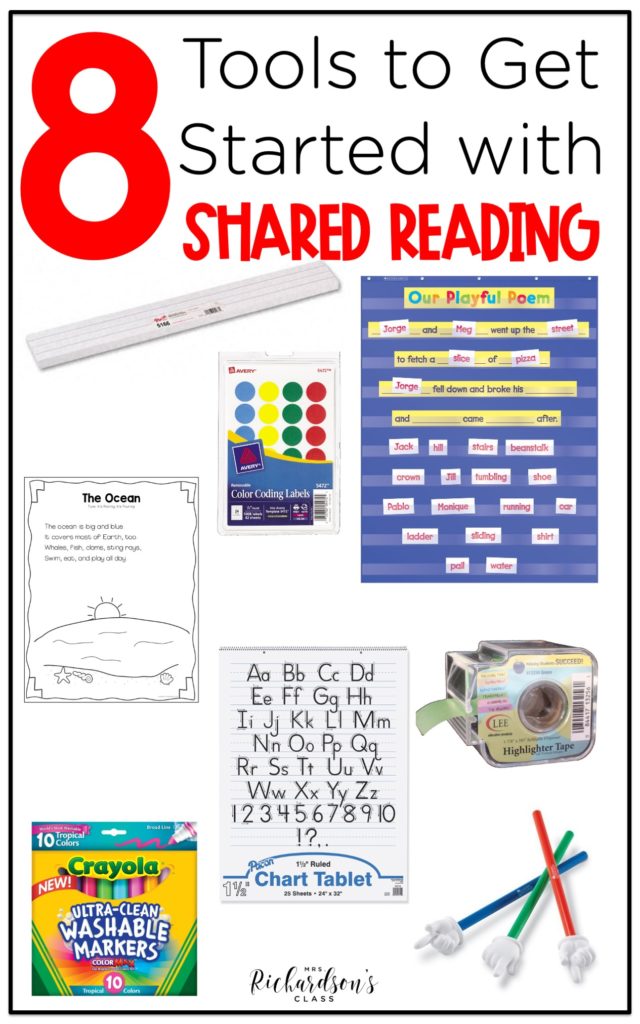
Here are my 8 favorites tools for implementing shared reading in my classroom.
1″ Highlight Tape-We use highlight tape to identify sight words and phonics patterns.
Sentence Strips-I use sentence strips to write the text on for that week. Sometimes I throw in a splash of color and other times I use simple white sentence strips.
Pointers-We use pointers to track the text as we are reading it. At the beginning of the year this is something that I model constantly. As the year goes on, students take ownership of this more often.
Pocket Chart– When we used sentence strips, then a pocket chart was needed to hold the strips. Our favorite pocket chart had a velcro pocket at the bottom and it would hold the phonics sorts that went with that poem and our pointer.
Chart Paper-Most of the time I write our poem on chart paper. I like that
Markers-I know many people don’t prefer them, but you just can’t beat Crayola washable markers. They are my favorite for writing on chart paper and sentence strips. I used them to write our poems.
Dot Stickers-We use dot stickers to place under each word in the poem. At the beginning of the year this helped us to track the text correctly. It guided our 1-to-1 correspondence. Also, much like highlight tape, we would sometimes use dot stickers to identify sight words or phonics patterns in the poem as the year went on and we didn’t need a guide to help track the text.
Poems– Over the years I used many resources to gather poems that fit my students’ needs. I always ended up writing my own here and there to go along with concepts that we were teaching. I now have this set of poems that have a science theme and have integrated phonics for each weekly poem.
You will use the same poem or big book for the whole week, but have a different task to complete with the poem each day. The teacher also sets a purpose prior to reading.
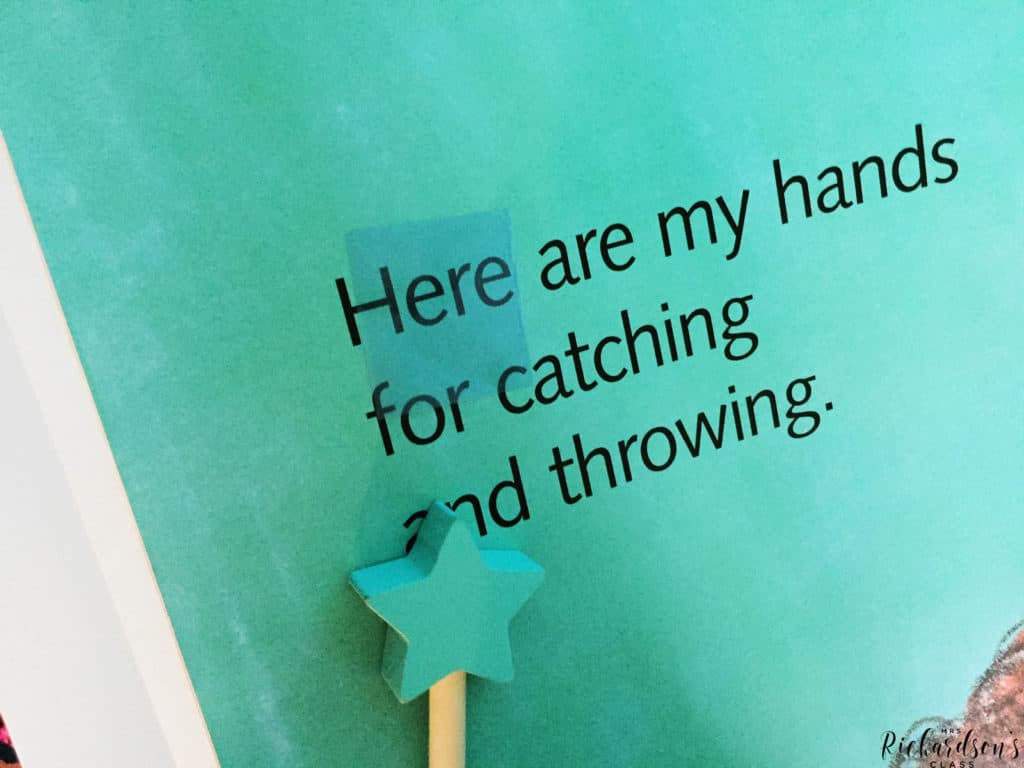
For example, “Today we will look for…” or “Today I will show you how good readers…”. I have provided a day by day teaching guide for you to follow for easy implementation in this shared reading blog post.
So you have made it through the week with your shared reading lessons–YAY! But now what do you do with your poem and phonics sorts? My favorite thing to do with the poem was to put it in a literacy station.
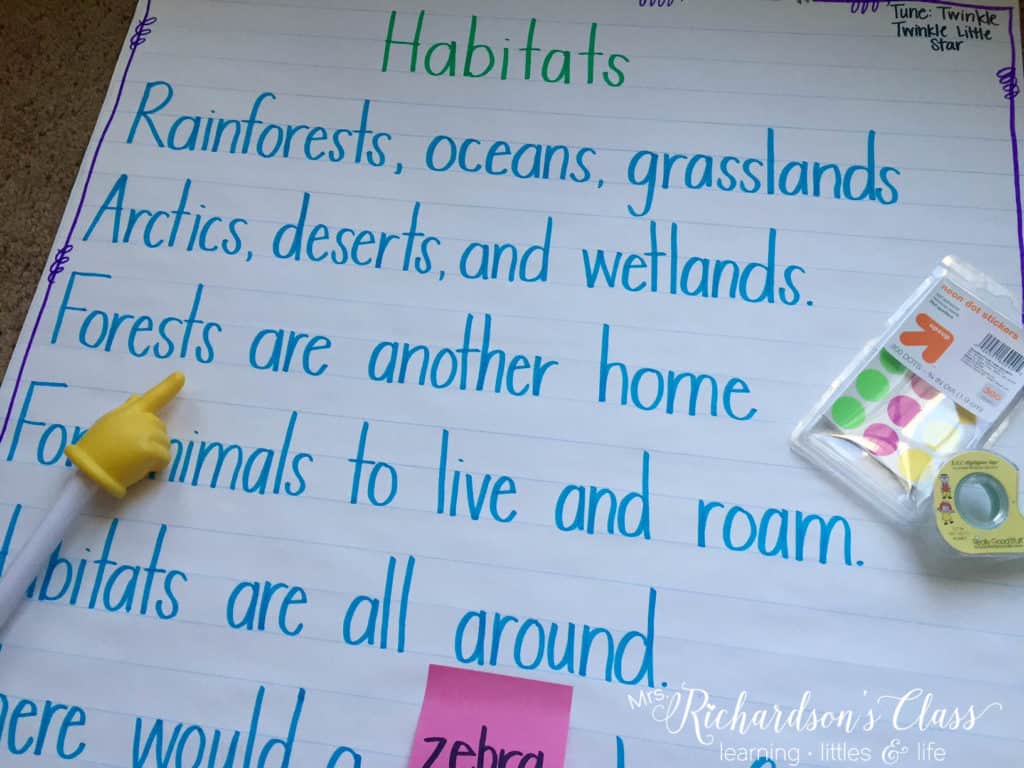
What we have practiced together becomes something for the students to practice with each other. They love this because they get to “play teacher”.
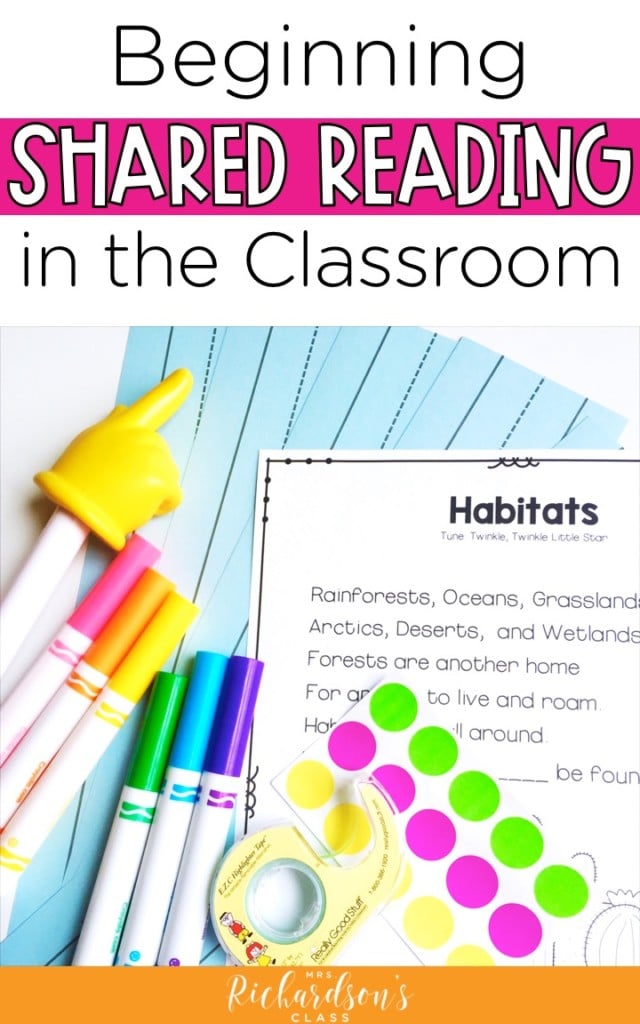
pin it
If you haven’t tried shared reading yet, then don’t wait any longer! Grab your favorite poem or big book and you’ll be set! If you DO do shared reading, is there anything you do differently? I would love to hear about your shared reading time!

Want to use the latest research to boost your readers during small groups? This FREE guide is packed with engaging ideas to help them grow!

I’m a K-1 teacher who is passionate about making lessons your students love and that are easy to implement for teachers. Helping teachers like you navigate their way through their literacy block brings me great joy. I am a lifelong learner who loves staying on top of current literacy learning and practices. Here, you’ll find the tools you need to move your K-2 students forward!


| Cookie | Duration | Description |
|---|---|---|
| cookielawinfo-checkbox-analytics | 11 months | This cookie is set by GDPR Cookie Consent plugin. The cookie is used to store the user consent for the cookies in the category "Analytics". |
| cookielawinfo-checkbox-functional | 11 months | The cookie is set by GDPR cookie consent to record the user consent for the cookies in the category "Functional". |
| cookielawinfo-checkbox-necessary | 11 months | This cookie is set by GDPR Cookie Consent plugin. The cookies is used to store the user consent for the cookies in the category "Necessary". |
| cookielawinfo-checkbox-others | 11 months | This cookie is set by GDPR Cookie Consent plugin. The cookie is used to store the user consent for the cookies in the category "Other. |
| cookielawinfo-checkbox-performance | 11 months | This cookie is set by GDPR Cookie Consent plugin. The cookie is used to store the user consent for the cookies in the category "Performance". |
| viewed_cookie_policy | 11 months | The cookie is set by the GDPR Cookie Consent plugin and is used to store whether or not user has consented to the use of cookies. It does not store any personal data. |
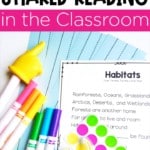
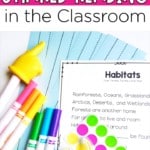
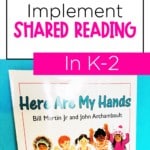
27 Responses
Love me some shared reading! I will admit that it’s so powerful and so short that sometimes I wouldn’t get to it. Especially, when my schedule had to change from time to time. I LOVE and ENJOY reading your posts Amanda! Hope your school year was amazing!!!
((Hugs))
Tiffany
One Fab Teacher
Oh my gosh, how did I miss your comment, Tiffany?! Thank you so much for your sweet, sweet words of encouragement! I hope you had a fabulous year!! 🙂
love!!! Thank you for all of your help. ; )
Of course! I am happy to help anytime!
If you can please email me I have a few questions to see in how you can help me with a 15 year old who does not like to read. ??? Please help If you can email me private I appreciate it.
Hi! I wish that I could help you, but I am not sure even where to begin with a 15 year old who doesn’t like to read. It may just be an age thing or you may be that you are looking at a reading disability that hasn’t been identified and the sweet child is sitting on years and years of reading frustration. I wish I could offer more help, but high school is not my expertise. I encourage you to reach out to your child’s school reading specialist.
This is an amazing resource. I am currently making a training for other teachers and this was so well laid out thanks!